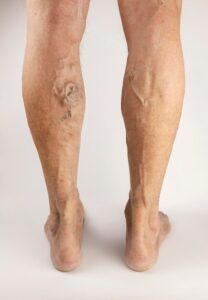If you notice red, purple, and blue lines just below the skin, then you may have what is known as “spider veins” (telangiectasia). These are damaged blood vessels that typically do not have any symptoms. They are very common and are harmless. However, in rare cases, there might be itching, burning, and discomfort, especially in the leg region. While they do not bulge out like varicose veins, they appear in clusters. This is the reason why many women are uncomfortable wearing skirts and dresses, as they are conscious of the appearance of the dilated vessels.
Should you be Worried about Spider Veins?
While they do not harm you in any way, spider veins can hamper your appearance. Women are more affected than men, and they usually appear in the thighs and legs. If you feel that the presence of spider veins is impacting your quality of life then you may opt for treatment of spider veins in cork.
Spider veins can be an early sign of CVI (chronic venous insufficiency). CVI will usually but not always be associated with leg swelling, darkening of the skin around the ankles, and the presence of larger bulging veins known as varicose veins.
Causes of Spider Veins:
While it’s not very clear why spider veins occur, some of the known causes are:
- Genetic syndromes
- Hormonal changes
- Trauma or injury
- Connective tissue diseases
You are at a Higher Risk of Developing Spider Veins if you:
- Have a family history of people developing varicose veins or spider veins.
- You are required in your work to stand for long hours.
- Have an obesity problem
- Are pregnant or have had previous pregnancies
- Use hormone therapy.
- Smoke or used to smoke
- Spend a lot of time in the sun.
Symptoms of Spider Veins:
While there are no grave symptoms, some people might co-existing CVI which with prolonged standing can cause:
- Cramping
- Itching
- Swelling
- Pain
- Legs that feel tired
However, these symptoms are not caused by spider veins. Only if the appearance is impacting your quality of like might you consider spider vein treatment in Cork. Spider veins rarely cause any complications, but if you suffer from other symptoms of CVI, then you should seek specialist advice.
Diagnosis and Tests:
For a spider vein diagnosis, a healthcare provider will connect with you for:
- A physical examination
- A look at your family’s and your own medical history
- An assessment for evidence of CVI
The healthcare provider usually looks for signs of CVI to determine if there is a lifestyle advice or treatment which might reduce you chances of further veins problems arising. Opting for spider vein treatment is an aesthetic treatment that many people consider.
Managing Spider Veins and their Treatment:
- Sclerotherapy: For spider veins on legs in cork, this minimally invasive treatment is the preferred method. The healthcare provider injects a chemical solution into the spider veins to close them off, and within 3 to 6 weeks, appearances are usually much improved. Some people might require several sessions for optimal results.
- Varicose veins therapy: Some time spider veins will be associated with larger veins called varicose veins. Usually these veins should be treated before or at the same time as treating the spider veins.
If considering spider vein treatment in cork a specialist vascular surgeon is best placed to understand and advise if you have evidence of CVI and will determine the best treatment option for you.

